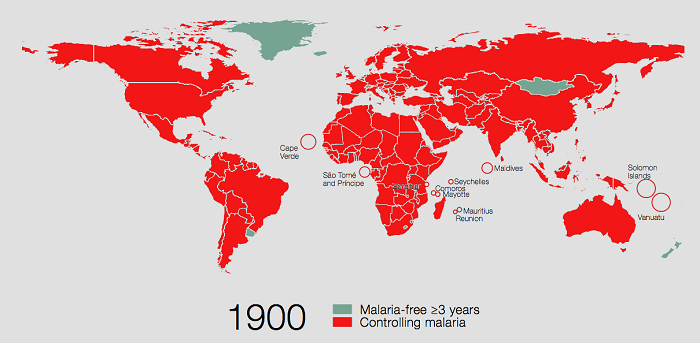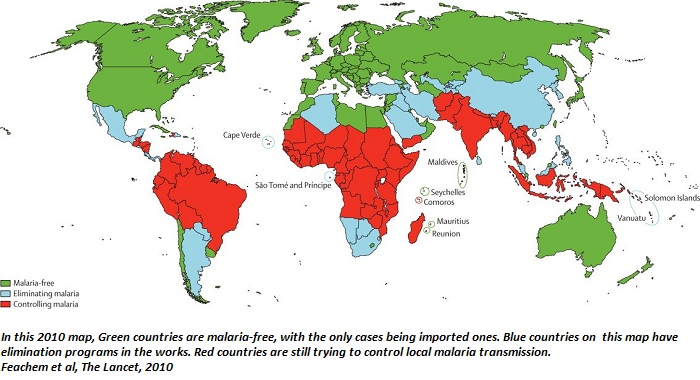Until relatively recently in human history, malaria was found on every continent except Antarctica, according to Dr. David Brandling-Bennett, an epidemiologist and the former director of the malaria strategy program at the Bill and Melinda Gates Foundation. There were even malaria outbreaks north of the Arctic Circle in places including Russia and Finland.
A look at a malaria map showing countries with active transmission at the start of the 20th century shows just how different things were then.

UCSF Global Health Group’s Malaria Elimination Initiative/Business Insider
The reason that all this matters is that it shows that malaria can be eliminated from ountries and eventually hopefully eradicated from the world, said Brandling-Bennett, who recently spoke at the Gates Foundation to a group of reporters participating in a fellowship program on malaria.
There are reasons why the illness, spread by a few dozen species of female Anopheles mosquito, persists in tropical regions of the world. For one thing, the mosquitoes and the malaria parasites they carry thrive in warm, wet regions. Plus, it`s much harder to get rid of them there than it is far to the north.
But hot and wet countries have been able to control local transmission of malaria. The Maldives and Sri Lanka were recently declared malaria-free. Costa Rica had just four malaria cases in 2014, but none from local transmission. And in 2015, Costa Rica reported zero malaria cases, making it close to being able to be certified malaria-free.
The bigger differences between regions able to eliminate malaria and those struggling to control local transmission have to do with money and stability, according to Dr. Bruno Moonen, who currently directs malaria strategy at the Gates Foundation.
Consequences of failure
A number of countries are on their way to malaria elimination in the next year or the next few years, including places like Argentina, Kyrgyzstan, and potentially South Africa. But it`s going to be harder to successfully wipe out the disease in certain rural parts of Nigeria or in the Democratic Republic of Congo. However, the consequences of failing to control the disease are reason enough to push for full eradication, hard as it will be in the final countries (as polio has shown, getting rid of the last pockets of an illness can be daunting).
As Moonen explained, "a decrease in resources leads to resurgence." If the parasite isn`t controlled, it starts to adapt to the drugs that we have already. Then it can spread back into regions it was previously gone from. Growing drug and insecticide resistance is part of what caused malaria death numbers to spike at the end of the 20th century.
"If we don`t eradicate malaria, we will constantly have to adapt our strategy," says Moonen. If we don`t, we can expect the numbers of people killed by the disease (mostly children under five and pregnant women, who lose immunities they`ve built up while pregnant) to climb back up to more than a million and then perhaps more.
















































